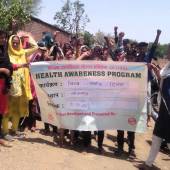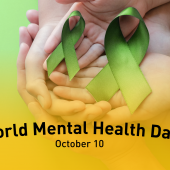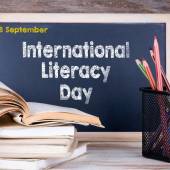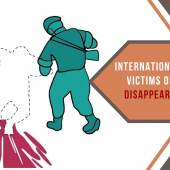World No Tobacco Day
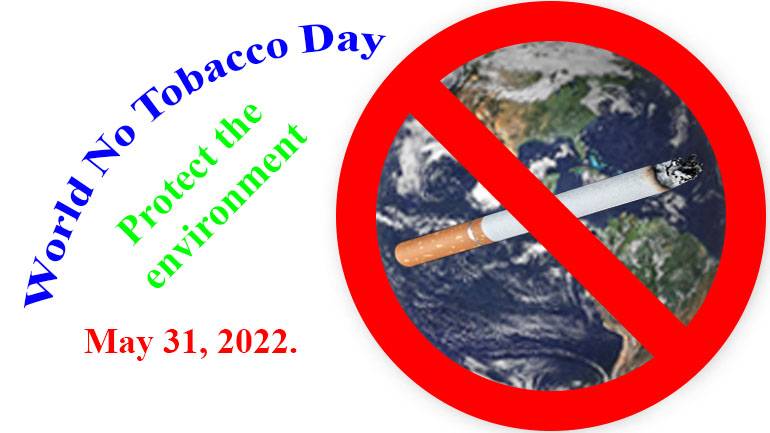
World No Tobacco Day which is an initiative by the World Health Organization (WHO) is held on May 31 each year.
The movement intends to spread awareness about the dangers of tobacco and its negative impact on health, as well as the exploitation of the nicotine industry that is geared towards the youth in particular.
It also aims to decrease the diseases and deaths caused by tobacco consumption. The World No Tobacco Day theme for 2022 was “Protect the environment.”
The Member States of the WHO recognized World No Tobacco Day in 1987 as a reaction to the global tobacco crisis and the diseases and deaths caused by the epidemic.
The World Health Assembly passed Resolution WHA 40.38 in 1987, calling for April 7 to be “World No-Smoking Day.” Next, Resolution WHA42.19 was passed in 1988, issuing May 31 as an annual observance of “World No Tobacco Day.”
The World Health Organization said in its reports that there are 8 million deaths every year due to the consumption of tobacco. Cigars, cigarettes, e-cigarettes, smoking hookah, chewing tobacco, and other products from tobacco are included when we speak about Tobacco.
Hookah smoking is also known as a narghile, shisha, or goza is a long tobacco pipe for smoking that draws the smoke through water.
Tobacco destroys our environment, further harming human health, through cultivation, production, distribution, consumption, and post-consumer waste.
Tobacco is the leading cause of respiratory disorders like chronic obstructive pulmonary disease, tuberculosis, and other lung diseases.
In 2008, the WHO banned any kind of advertisement or promotion of tobacco. As the world’s most populated country, China is the leader in the cigarette industry. More than 30% of the total cigarettes in the world were produced and consumed in China in 2014.
The harmful impact of the tobacco industry on the environment is vast and growing adding unnecessary pressure to our planet’s already scarce resources and fragile ecosystems.
The Sustainable Development Agenda intends to lessen deaths from noninfectious diseases by a third.
Calls to Action
General public:
- Give tobacco users an extra reason to quit. Quitting tobacco benefits your health and the environment.
- Support policy action around the ban on single-use plastics which include cigarette butts, smokeless tobacco pouches, and electronic waste.
- Raise awareness of the tobacco industry’s greenwashing tactics.
- Support governments on additional levies/taxes on industry to protect the environment.
Youth and future generations:
- Advocate for 100% tobacco-free schools to protect children and youth from exposure to direct, second-hand, and third-hand smoke.
- Start or join a movement to protect the environment. Raise awareness about the environmental impact of tobacco and sensitize the public, in particular, the youth.
- Support the reduction of chemicals, including the carbon footprint to protect the younger generation from the ill effects of environmental tobacco waste.
- Reduce the number of tobacco retail stores.
Ministries and policymakers:
- Impose the Extended Producer Responsibility (EPR) policy principle on the tobacco industry to hold them accountable for the cost of cleaning up Tobacco Product Waste (TPW).
- Impose an environmental tax levy on the tobacco manufacturers, distributors, and the consumer, across the supply chain for carbon emissions, air pollution, and other environmental costs.
- Implement tobacco control (MPOWER measures) to minimize the environmental impact of tobacco.
- WHO established MPOWER and it means:
- M: Monitor tobacco use and prevention policies
- P: Protect people from tobacco smoke
- O: Offer help to quit smoking
- W: Warn about the dangers of tobacco
- E: Enforce bans on tobacco advertising, promotion, and sponsorship
- R: Raise taxes on tobacco
- Support tobacco farmers to switch to alternative, sustainable livelihoods, in line with Art 17 and 18 of the WHO Framework Convention on Tobacco Control (FCTC).
- Advise governments on how to leverage the conference of the Parties (COP) of International Climate in Cairo in November 2022 to collaborate and advance the tobacco control agenda in line with World No Tobacco Day.
- NGOs and civil Society: Raise awareness of the environmental impact of tobacco across the life cycle from cultivation, production, distribution, use, and waste.
- Showcase the tobacco waste problem in public spaces and communities.
- Raise awareness of the benefits of switching to different crops and how it is linked to tobacco control more broadly.
- Expose tobacco industry tactics and efforts to “greenwash” its reputation and products by marketing itself as environmentally friendly.
Tobacco farmers:
- Switch to sustainable and environmentally friendly crops providing a greater return on investment in terms of health and wealth.
Academia and intergovernmental organizations including UN agencies and development banks:
- Collect data on water use, deforestation, and the lethal and environmentally degrading chemicals in tobacco products and the environmental harm of these components on soil, drinking water, and human and animal health.
- Estimate the total impact of tobacco product waste as well as the total environmental impact of one tobacco product.
- Raise awareness of projects in tobacco growing countries, for example in Kenya where hundreds of farmers successfully switched to alternative crops, as well as deforestation and climate change projects in East Africa.
- Raise awareness of the linkages between the environmental impact of tobacco and health outcomes, linking it to adverse developmental outcomes.
Radio Veritas Asia (RVA), a media platform of the Catholic Church, aims to share Christ. RVA started in 1969 as a continental Catholic radio station to serve Asian countries in their respective local language, thus earning the tag “the Voice of Asian Christianity.” Responding to the emerging context, RVA embraced media platforms to connect with the global Asian audience via its 21 language websites and various social media platforms.









